
Source:Green pepper literature
Published July 6, 2023 in Cell Stem Cell (IF: 23.9) research papers on organoids. The paper, "Generating high-fidelity cochlear organoids from human pluripotent stem cells," was published by Professor Eri Hashino and his team at Indiana University. A method for generating high-fidelity cochlear organoids from human pluripotent stem cells is introduced. The method uses a novel three-dimensional culture technique that enables pluripotent stem cells to differentiate into cochlear organoids with molecular, structural, and functional characteristics similar to cochlear hair cells. The researchers also conducted in-depth studies of these organs through single-cell transcriptomics and electrophysiology techniques, and found that they have similar electrophysiological properties to natural cochlear hair cells. The study provides a new model for studying the development of human cochlear hair cells and offers new ideas for treating diseases such as deafness.
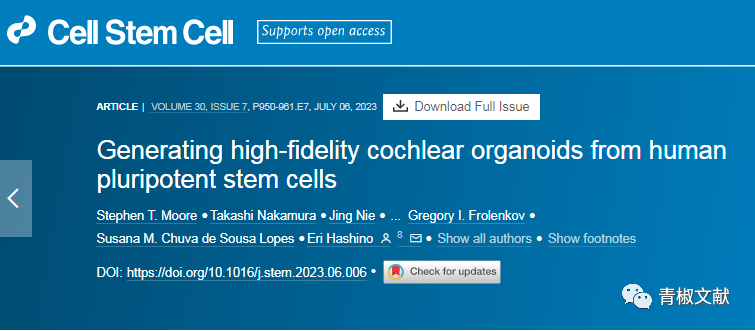

Research background
Cochlear hair cells are mechanically sensitive cells responsible for hearing, but they are susceptible to genetic mutations and environmental damage. Because of the scarcity of human cochlear tissue, studying cochlear hair cells has been a difficult problem. So researchers needed a way to study cochlear tissue in vitro. The aim of this literature is to develop a method for generating high-fidelity cochlear organoids from human pluripotent stem cells in order to study the development and function of human cochlear hair cells and to provide new ideas for treating diseases such as deafness. To achieve this goal, the researchers used a novel three-dimensional culture technique and promoted differentiation of cochlear organoids by timing the regulation of signaling pathways. They also used single-cell transcriptomics and electrophysiology techniques to take a closer look at these organs to see if they have properties similar to natural cochlear hair cells.
Research idea
1. Establishment of human pluripotent stem cell lines: The researchers first established a series of human pluripotent stem cell lines that can differentiate into different cell types.
2. Establishment of PAX2/POU4F3 reporter gene series: The researchers used CRISPR/Cas9 technology to establish a PAX2/POU4F3 reporter gene series that can be used to detect differentiation of cochlear organoids.
3. Three-dimensional culture technology: The researchers used a novel three-dimensional culture technology to differentiate pluripotent stem cells into cochlear organoids.
4. Signaling pathway regulation: Researchers promote differentiation of cochlear organoids by timing the Sonic Hedgehog and WNT signaling pathways.
5. Analyzing organ properties: The researchers used single-cell transcriptomics and electrophysiology techniques to conduct in-depth studies of these organs to determine whether they have properties similar to natural cochlear hair cells.
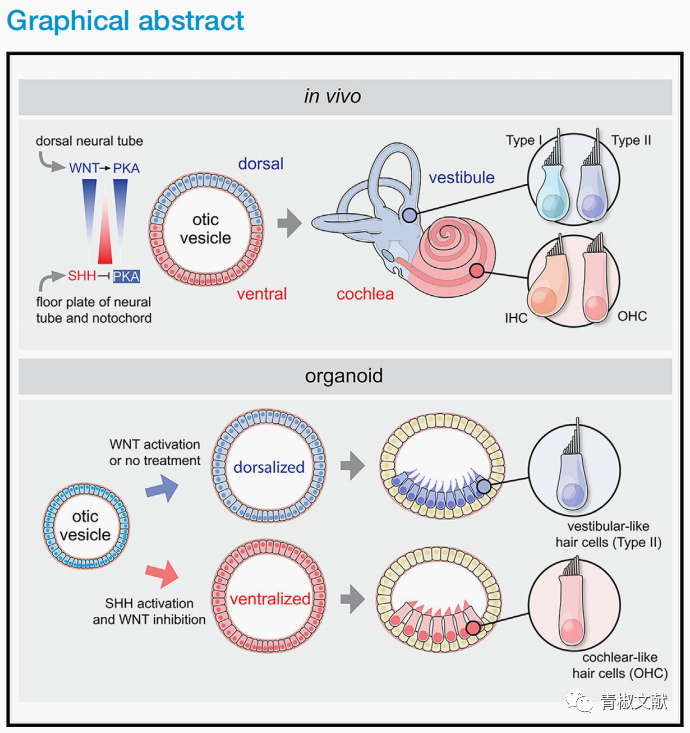
Research result
With the above steps, the researchers successfully established a method for generating high-fidelity cochlear organoids from human pluripotent stem cells and provided a new model for studying the development and function of human cochlear hair cells. In summary, the researchers used a novel three-dimensional culture technique to differentiate pluripotent stem cells into cochlear organoids. These organs include supporting cells and functional hair cells with molecular, structural, and functional characteristics similar to natural cochlear hair cells. The researchers conducted an in-depth study of these organs using single-cell transcriptomics and electrophysiological techniques to determine whether they have properties similar to natural cochlear hair cells. It was found that the timing of Sonic Hedgehog and WNT signaling pathways can promote the differentiation of cochlear organoids, which provides a new way to study the development of human cochlear hair cells. This approach also provides new ideas for treating diseases such as deafness, which can be used to develop new treatments and drugs.
1. A method for generating high-fidelity cochlear organoids from human pluripotent stem cells was established
The researchers used a novel three-dimensional culture technique to differentiate pluripotent stem cells into cochlear organoids. These organs include supporting cells and functional hair cells with molecular, structural, and functional characteristics similar to natural cochlear hair cells.
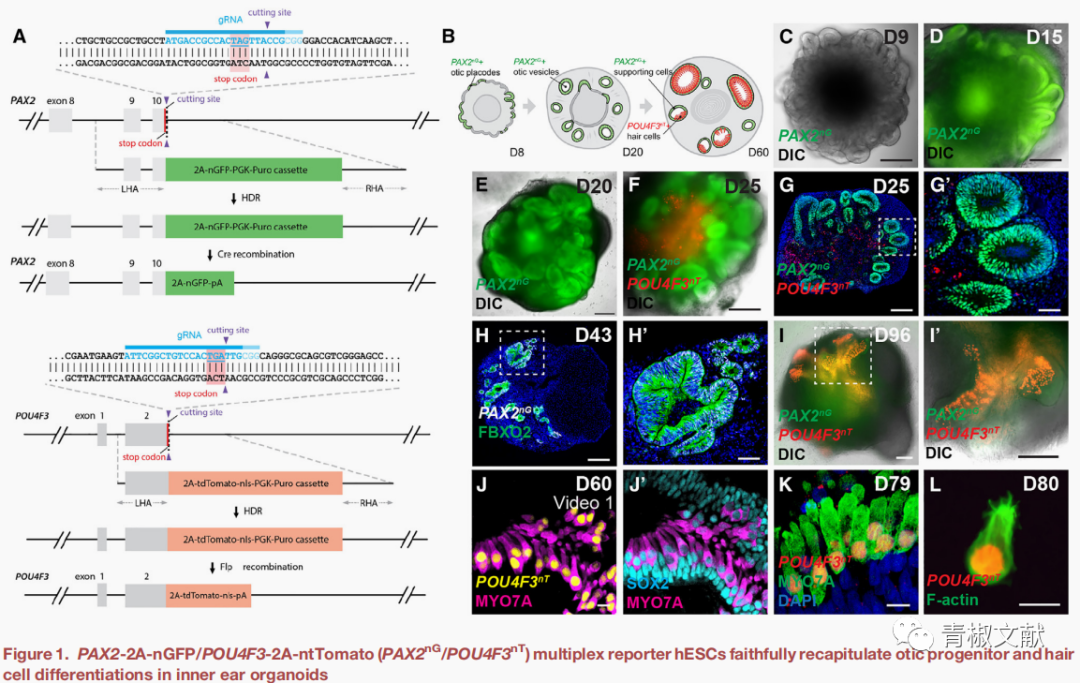
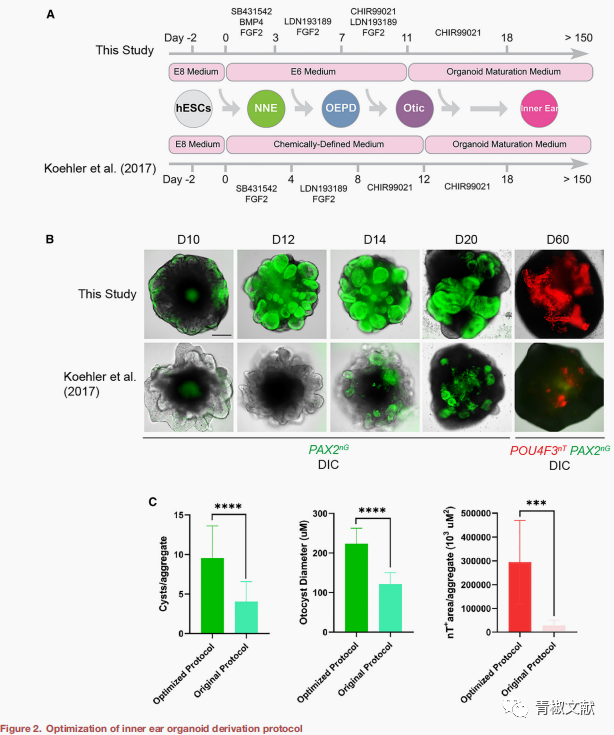
2. The influence of signaling pathways on organ differentiation was determined:
The researchers found that timing the Sonic Hedgehog and WNT signaling pathways promotes differentiation of cochlear organoids.
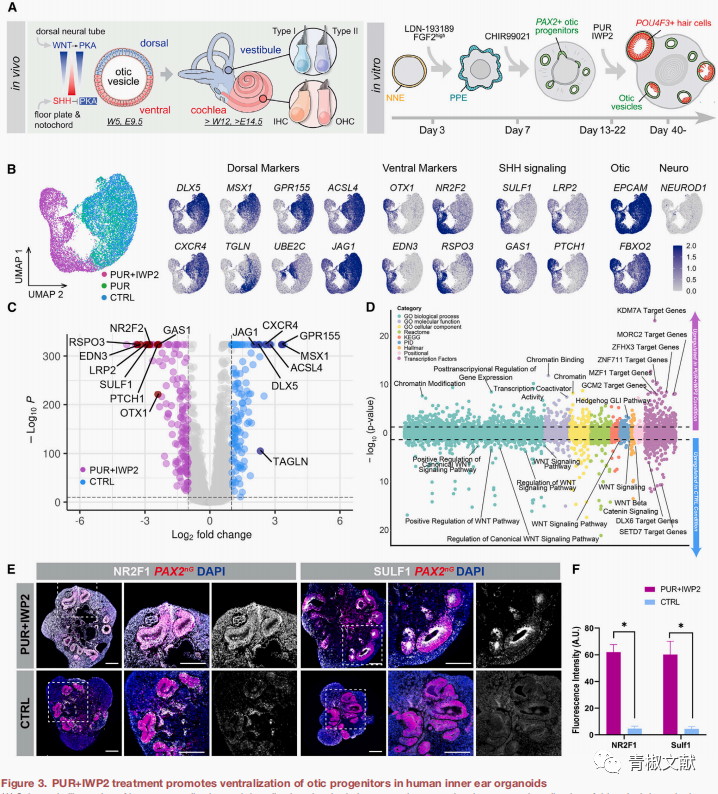
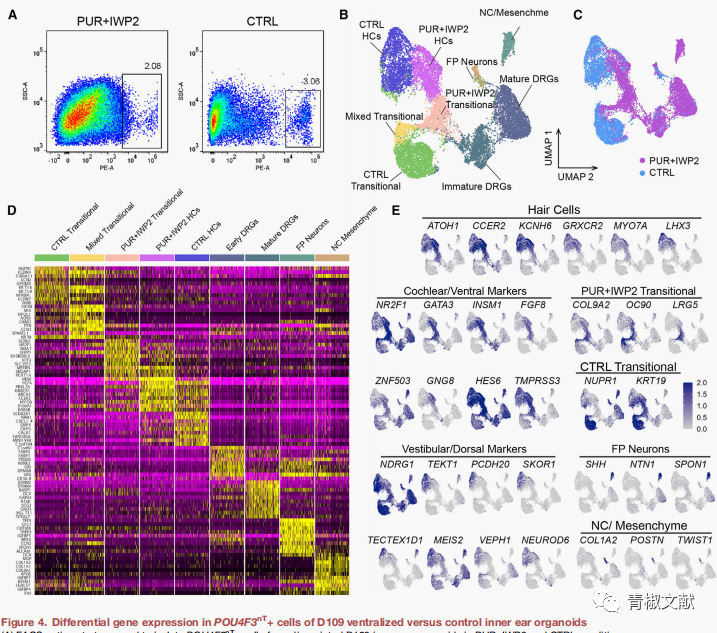
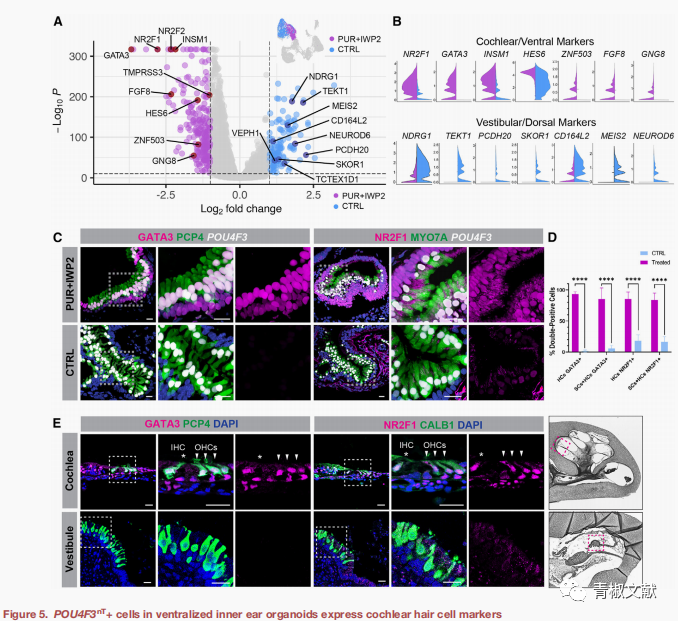
3. The electrophysiological properties of these organs were determined:
The researchers tested these organs using electrophysiological techniques and found that they had similar electrophysiological properties to natural cochlear hair cells.
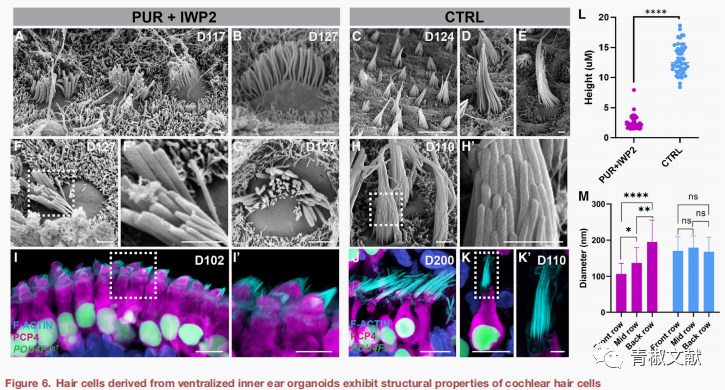
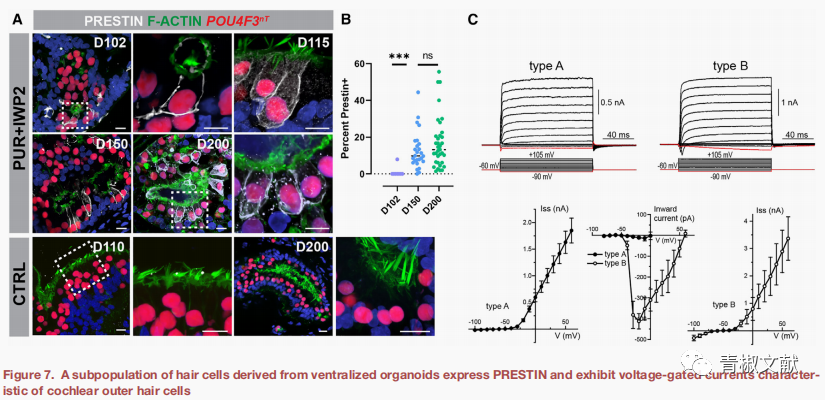
4. It provides a new model for studying the development of human cochlear hair cells:
This method of generating high-fidelity cochlear organoids from human pluripotent stem cells provides a new model for studying the development of human cochlear hair cells and can help researchers better understand the development and function of cochlear hair cells.
5. Provides new ideas for the treatment of deafness and other diseases:
This approach also provides new ideas for treating diseases such as deafness, which can be used to develop new treatments and drugs.
Summary of key technologies
1. Human pluripotent stem cell culture technology: This paper uses human pluripotent stem cells as the starting material and differentiates them into cochlear organoids through a series of culture and differentiation steps.
2. Three-dimensional culture technology: This paper uses a novel three-dimensional culture technology to differentiate pluripotent stem cells into cochlear organoids. This technology can better simulate the physiological environment in the human body and improve the efficiency and stability of cell differentiation.
3. CRISPR/Cas9 gene editing technology: This paper uses CRISPR/Cas9 technology to establish a PAX2/POU4F3 reporter gene series, which can be used to detect the differentiation of cochlear organoids.
4. Single-cell transcriptomic techniques: This paper uses single-cell transcriptomic techniques to conduct an in-depth study of these organs to determine whether they have similar properties to natural cochlear hair cells.
5. Electrophysiological techniques: The literature tested these organs using electrophysiological techniques and found that they have similar electrophysiological properties to natural cochlear hair cells.
6. Signaling pathway regulation technology: This paper found that timing regulation of Sonic Hedgehog and WNT signaling pathways can promote the differentiation of cochlear organoids, which provides a new idea for studying the development of human cochlear hair cells.